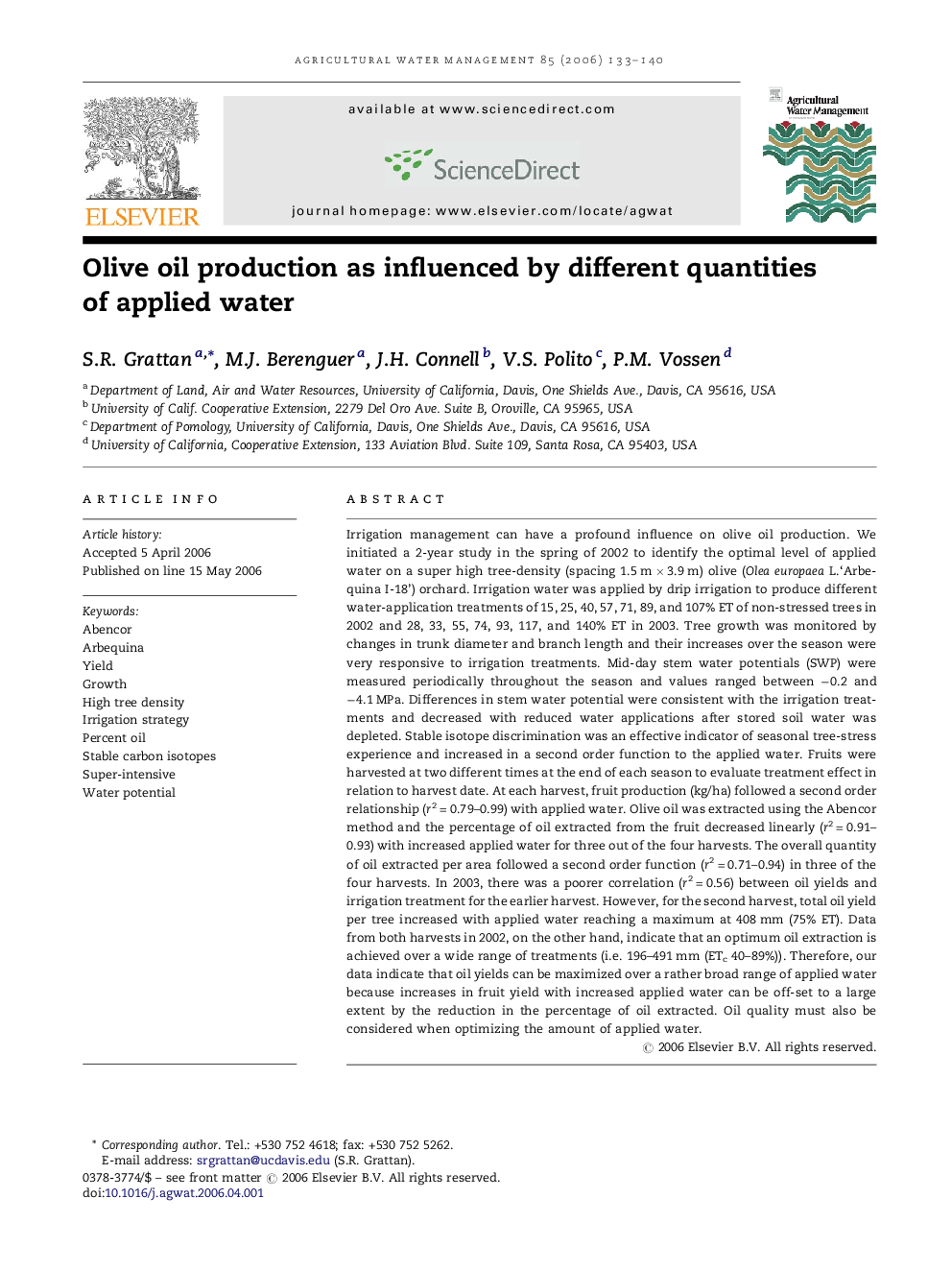| کد مقاله | کد نشریه | سال انتشار | مقاله انگلیسی | نسخه تمام متن |
|---|---|---|---|---|
| 4480473 | 1622987 | 2006 | 8 صفحه PDF | دانلود رایگان |

Irrigation management can have a profound influence on olive oil production. We initiated a 2-year study in the spring of 2002 to identify the optimal level of applied water on a super high tree-density (spacing 1.5 m × 3.9 m) olive (Olea europaea L.‘Arbequina I-18’) orchard. Irrigation water was applied by drip irrigation to produce different water-application treatments of 15, 25, 40, 57, 71, 89, and 107% ET of non-stressed trees in 2002 and 28, 33, 55, 74, 93, 117, and 140% ET in 2003. Tree growth was monitored by changes in trunk diameter and branch length and their increases over the season were very responsive to irrigation treatments. Mid-day stem water potentials (SWP) were measured periodically throughout the season and values ranged between −0.2 and −4.1 MPa. Differences in stem water potential were consistent with the irrigation treatments and decreased with reduced water applications after stored soil water was depleted. Stable isotope discrimination was an effective indicator of seasonal tree-stress experience and increased in a second order function to the applied water. Fruits were harvested at two different times at the end of each season to evaluate treatment effect in relation to harvest date. At each harvest, fruit production (kg/ha) followed a second order relationship (r2 = 0.79–0.99) with applied water. Olive oil was extracted using the Abencor method and the percentage of oil extracted from the fruit decreased linearly (r2 = 0.91–0.93) with increased applied water for three out of the four harvests. The overall quantity of oil extracted per area followed a second order function (r2 = 0.71–0.94) in three of the four harvests. In 2003, there was a poorer correlation (r2 = 0.56) between oil yields and irrigation treatment for the earlier harvest. However, for the second harvest, total oil yield per tree increased with applied water reaching a maximum at 408 mm (75% ET). Data from both harvests in 2002, on the other hand, indicate that an optimum oil extraction is achieved over a wide range of treatments (i.e. 196–491 mm (ETc 40–89%)). Therefore, our data indicate that oil yields can be maximized over a rather broad range of applied water because increases in fruit yield with increased applied water can be off-set to a large extent by the reduction in the percentage of oil extracted. Oil quality must also be considered when optimizing the amount of applied water.
Journal: Agricultural Water Management - Volume 85, Issues 1–2, 16 September 2006, Pages 133–140